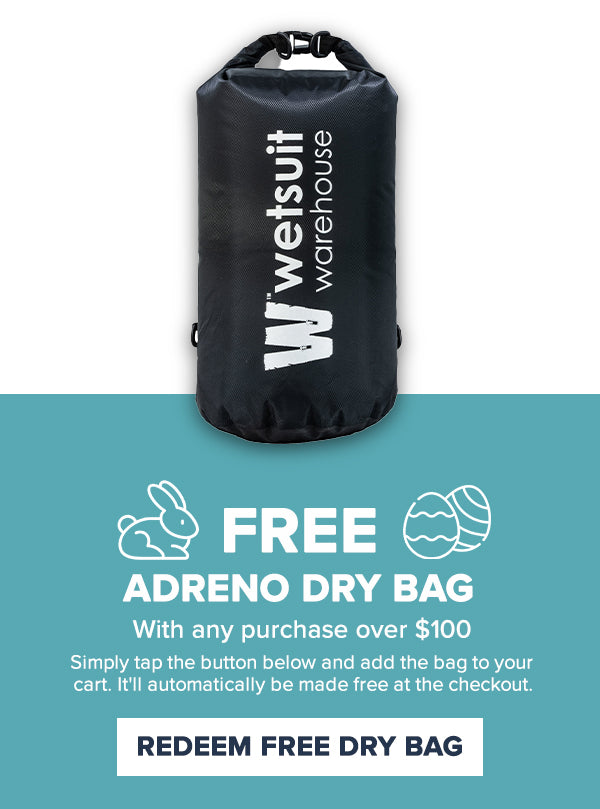Rash Vests FAQ
1. What are rash vests?
Rash vests (also known as rashies or rashguards) are very useful pieces of kit for water sports enthusiasts. Energetic water based activities such as surfing and wake boarding can cause rubbing around key areas of your body including your chest, neck and shoulders. This could be from the friction of the board or your wetsuit as you move around. Rash vests help to prevent chafing and soreness. Rash vests can also provide a layer of additional warmth in cooler water conditions and can be worn under wetsuits or over swimming suits.
2. Can rash vests provide UV protection?
If you are going to be out on the water for a long time in sunny conditions you do need to consider UV protection very carefully. Waterproof sunscreens will only last for a while, especially if you are doing any active sports. Rash vests are treated against UV light and so offer an additional layer of protection for your skin against sunlight.
3. Will my rash vest fit under my wetsuit?
Rash vests are very close fitting. If you cannot fit your rash vest underneath your wetsuit then this means your suit is probably too tight. Rash vests can also help to prevent rubbing if your wetsuit is a little loose around certain areas such as the arms or chest. It is very difficult to get a wetsuit to fit perfectly as everyone is a slightly different shape so a rash vest can be a useful item of clothing to help make your suit much more comfortable.
4. Which is best short sleeve or long sleeve rash vests?
Sun protection tops can come with long or short sleeves (or sleeveless). Long sleeve rash vests are useful if you get chafing around your arms/armpits. They will also provide more warmth and protection from the sun if you are wearing them over boardshorts or swimming suits. Short sleeve rash vests are good for warm water conditions and will also fit comfortably underneath wetsuits to prevent chafing.
5. How to you get the right fit for rash vests?
Rash vests are designed to fit snugly against your skin so they do need to be reasonably tight. However they should not be so tight they restrict your movements or feel uncomfortable. If your rash vest is too loose it could roll up and move around whilst you are in the water. Always try on rash vests before you wear them for the first time in the water to make sure they fit well.
6. What thickness rash vest should I choose?
If you are going to be in cooler water conditions then a rash vest can add an additional layer of warmth. Rash vests come in different thicknesses so you do need to check the water temperatures and choose one that can provide you with the best insulation. You will need to check you can still fit your rash vest on under your wetsuit so make sure you try everything on before you go near the water just to make sure it all works together. The warmest rash vests are long sleeved and have additional linings (such as titanium) to reflect back body heat. They will also have a hood section as well to help keep your head warm.
7. What are rash vests made from?
Most rash vests are made from spandex, nylon, Lycra or polyester. These materials provide lightweight, comfortable garments that can be worm for additional protection. For colder conditions rash vests can also be upgraded to thermal vests with additional layers or fleece or titanium. Materials such as spandex, polyester and nylon are ideal for wet conditions as they do not absorb too much water (so they don’t sag out of shape) and they are flexible, durable and quick drying.
8. What sports can I use rash vests for?
You can use rash vests for a wide number of different for water sports including diving, wake boarding, surfing, kayaking and swimming. They are also useful as an additional layer of protection when you are sailing or taking part in shore side activities. Rash vests are most commonly worn by surfers and provide a great way to prevent board chafing in warmer water conditions when a wetsuit is not worn.
9. What seam structure do I need to choose for a rash vest?
Rashies are most commonly made with a flatlock stitching seam. This lies flat against the skin and provides a smooth, comfortable profile. Cheaper rash vests can be made with overlock seams. These are slightly raised and because rash vests are so close fitting these made not be as comfortable against the skin. Flatlock stitching is very durable and will stand up well to the constant movements of active exercise. Rash vests are also constructed in six panels of material rather than the normal four panels of t-shirt and vest garments. This allows a much greater range of movement when wet or dry.
10. Can rash vests be worn for dry sports?
Different forms of rash vests have made their way into non-water based sports as well such as baseball, football and even martial arts. They can help to retain warmth and prevent rubbing. They are also made from materials that can pull moisture (generated by sweat) away from the skin to help keep you feeling dry and cool whilst you are exercising.


